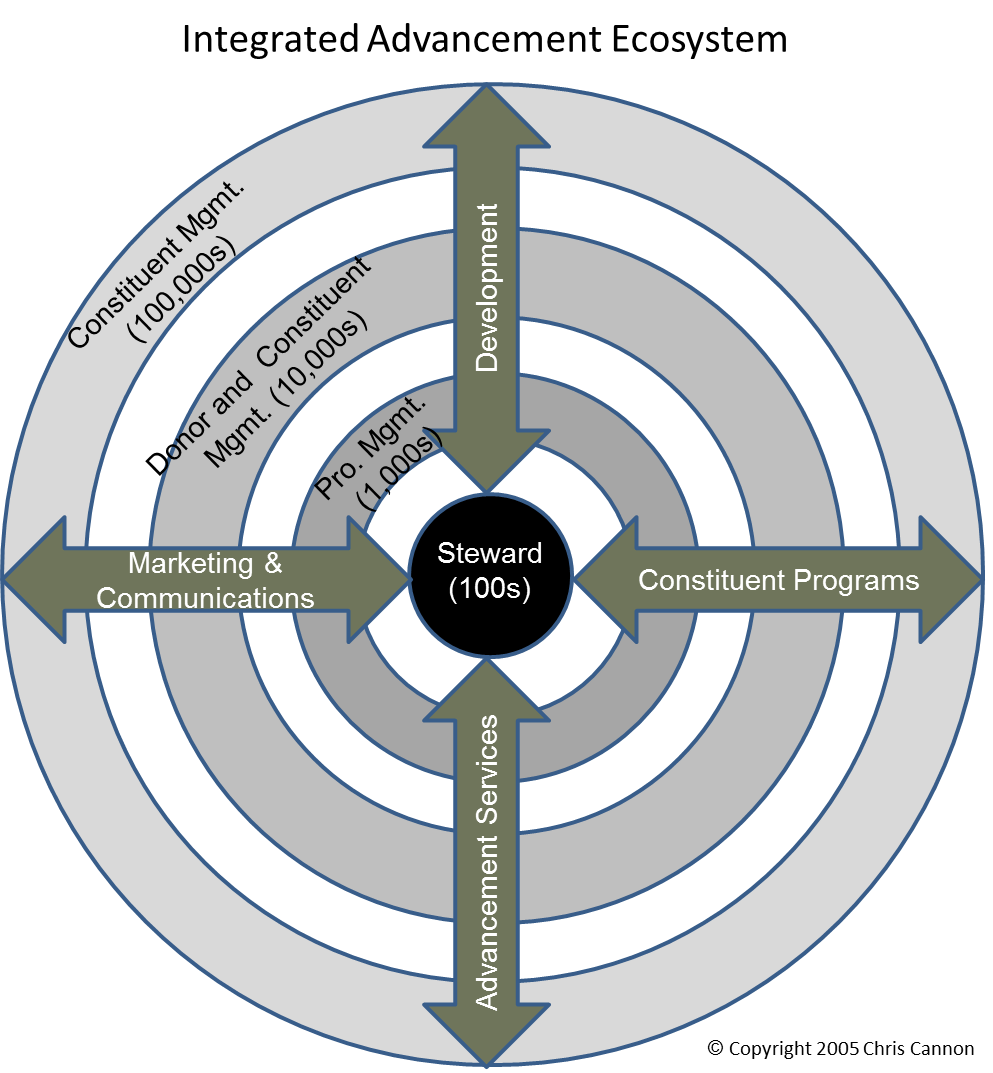Development and alumni organizations face obstacles and challenges each day. It seems that pressure comes from all sides and angles. Raise more money, despite a slow economy. Engage more people, despite increasing competition for space in people’s lives. Lately, two core changes have been impacting nonprofits around the country: leadership changes and technology issues. Both of these affect fundraising operations, and finding a way to “handle” these issues is critical. On the leadership front, high functioning presidents and vice presidents are in high demand. Tenures of university presidents and healthcare CEO’s declining. There’s not much most can do to stop this slide, except to be prepared for it to happen. On the technology front, 2012 was full of mergers and other changes that substantially impact development technology suites. Much of this change is aligning with the tail-end of many product life cycles. These changes affect every nonprofit for a donor database, so one of these days these marketplace changes will affect each organization. More change is stemming from social, online, and BI-based innovations occurring at a pace that’s hard to match. The most dangerous aspect of the core changes is the all-too-frequent dip in productivity organizations experience “as a result of” the change. This issue is in quotes because, while leadership and technology change is hard to “manage” (we typically don’t have much control), these changes can be anticipated and protected against. The good news is that both of these changes can be managed through a similar set of solutions which will keep decline at bay in the midst of change:
- Plan the work. A plan that aligns with the organization’s mission and vision will help ride out the turbulence from a big leadership or technology change. You might be surprised at how effective a good plan is in keeping the trains running on time.
- Work the plan. The plan should have measurable targets for behavior. Great plans will reward and steer attention to the highest value activities we can muster. So, if the plan is in place, working it should generate the results your organization needs, despite a presidential transition or a looming conversion.
- Avoid the tyranny of the urgent. In both cases, careful change management (starting with requirements, weighing options, evaluating real and intangible costs) must prevail over short-term thinking and flailing actions. Plus, reminding folks about what’s important in their daily work and the impact their role has on the organization’s constituents can help retain staff despite rough patches.
- Get in front of disruptive change. This last issue is the most complicated and I’ve dedicated a separate blog to it. Leadership and technology changes are disruptive, often resulting in entirely new ways of doing business. We have seen in 2012 with Hostess, and over and over again for Kodak, that markets move on, and our offerings must match today’s and tomorrow’s needs. As fundraising tactics shirt around direct response, as phonable and mailable constituents decline, as the nature of our organization’s missions and deliverables change (think MIT’s free open courseware offerings and the impact of the Affordable Care Act on healthcare philanthropy), our fundraising strategies and tactics must keep pace.
And, if we plan the work, work the plan, and remain focused on the important, we can get through change without a dip n productivity. Do you have suggestions for handling change and avoiding declines in the process? Let’s hear about them!

